I wasn’t surprised to learn that many travelers just travel to West Turkey primarily to visit Ephesus. Ephesus is one of the most well-preserved Roman ruins in the world, and no surprise it draws over two million visitors annually. A UNESCO heritage site, Ephesus is a window to life in ancient times. Ephesus grew from a coastal town in the 10th century BC to the second largest city in the world, as trade routes were established between the Mediterranean and Asia. Over years Ephesus grew as a trading city and a center for the cult of Cybele, the Anatolian fertility goddess.
As time passed, Ephesus passed from one kingdom to the other, and Cybele became Artemis, the virgin goddess of the hunt and the moon, and a fabulous temple was built in her honor. Under the Romans, Artemis became the goddess Diana, and the trade city became the provincial capital. It was under Romans that Ephesus flourished and reached the heights of its glory, which lives till today.
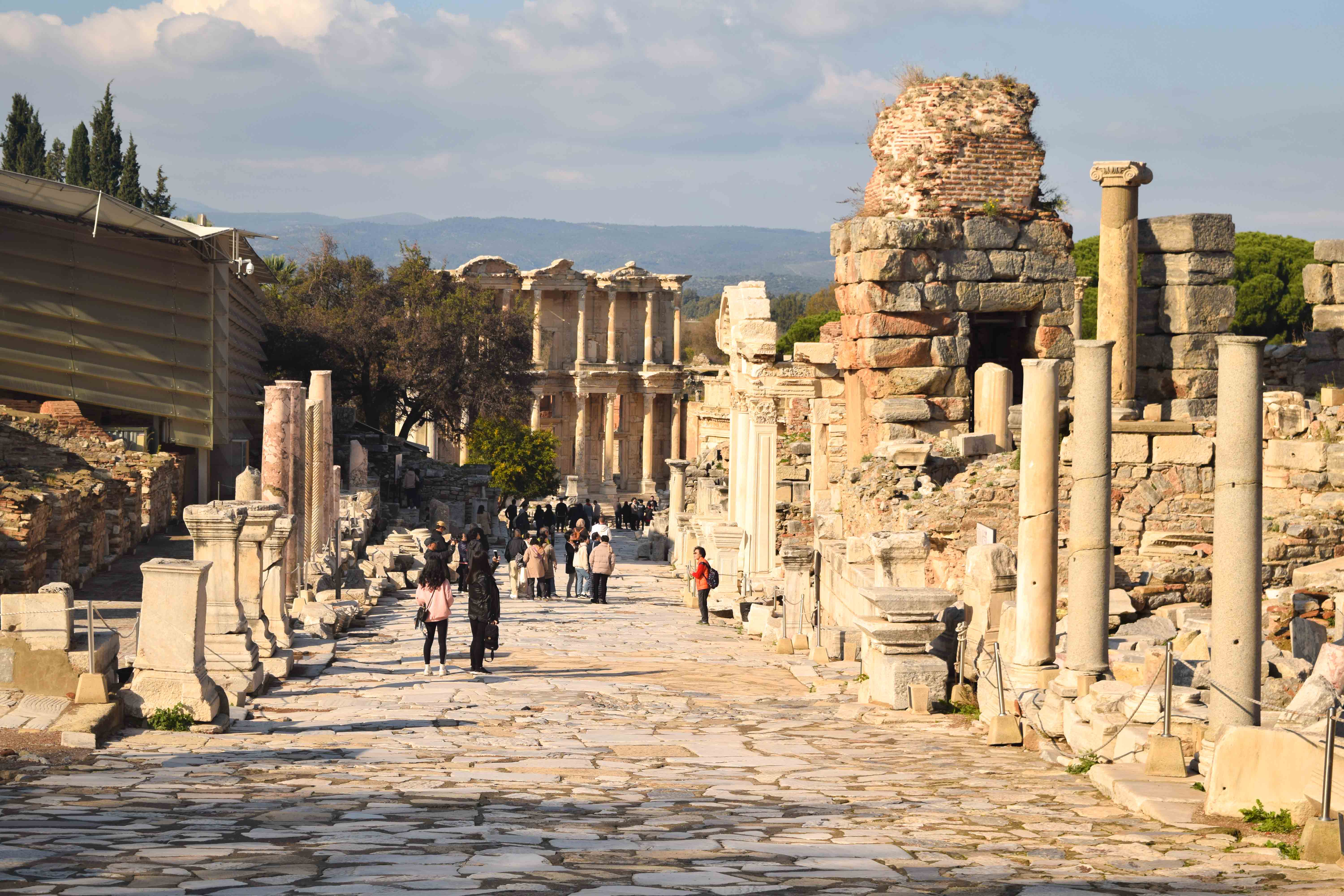
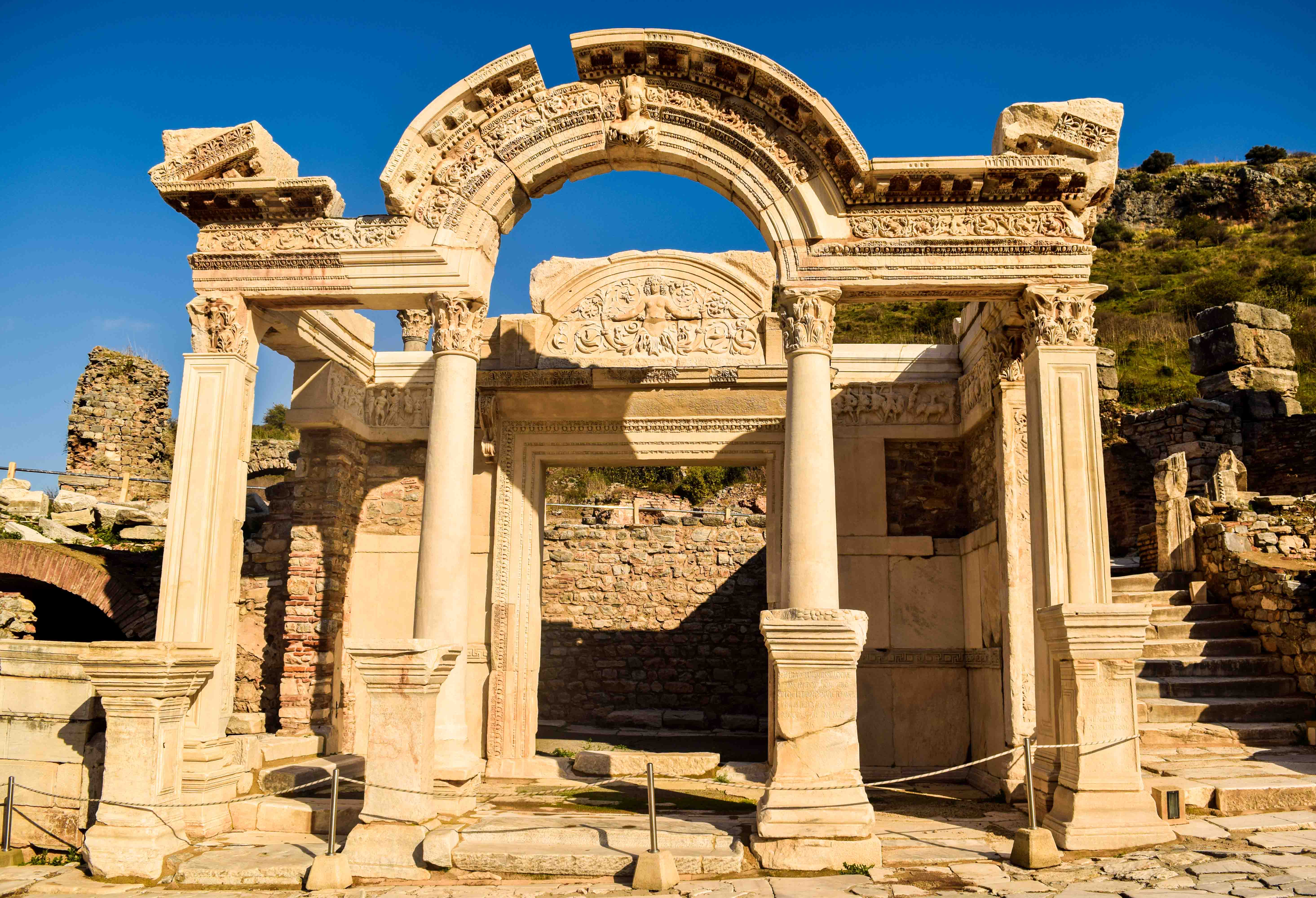

In 356 BC, the Temple of Artemis was destroyed in a fire by a lunatic. The Ephesians built a grand new temple which, was recognized as one of the Seven Wonders of the Ancient World. Ephesus a vibrant city of over 250,000 individuals, and uncountable sailors, traders, and pilgrims, the city was a Roman world classical metropolis. And with every excavation which has been happening for over a century and a half now, new signs of how art, culture, and even history were shaped in this metropolis are coming to light. And that when 80% of this ancient city is still to be unearthed.
I took the early morning train from Denizli to follow in the footsteps of Alexander the Great and Cleopatra, the Romans, the Byzantines, and the Ottomans. From the train station of Selcuk, one can take a mini-bus to Ephesus. Ephesus’s most famous building is the Temple of Artemis, but that has been long destroyed. The center of attraction is the two-story Celcus Library, which was once one of the world’s largest libraries with over 12,000 scrolls.


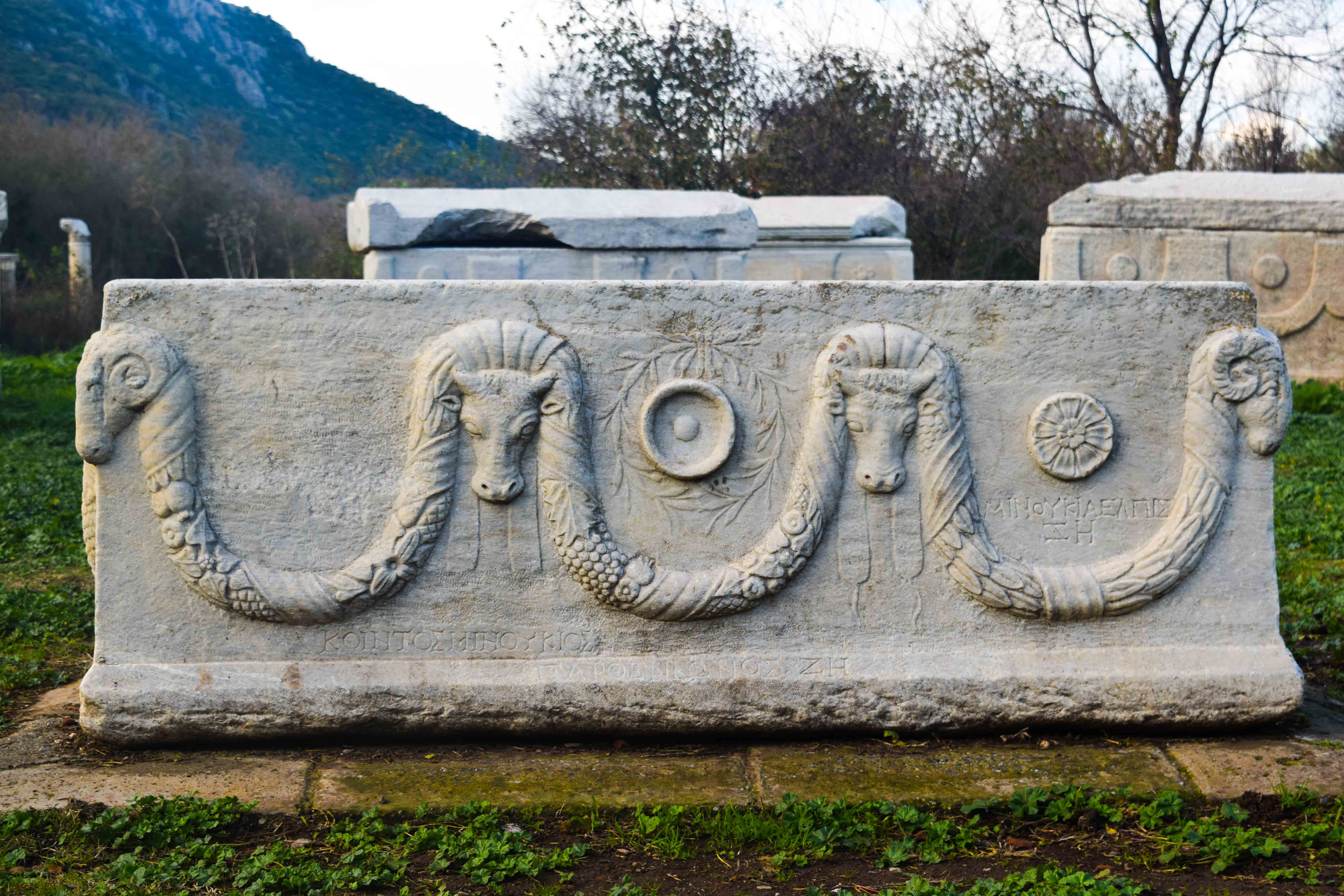
I began my way through Harbour Street, where the heart of the old city once lay. As the name says this street once lined the harbor. Walking straight down the street takes one down to the Great Theatre, the Roman amphitheater, a three-tiered theatre, built into the slope of a hill, once seated 25,000 people, then up the sacred way, all the way to the Celcus Library, then the Curetes way which housed the residential areas of the city. On the street, you will find other structures like the temples, the Hercules Gate, and the small theatre, which was used for town council meetings. Then there is the complex of terrace houses, also known as “the houses of the rich”, neatly conserved, and provide a remarkable sense of the daily professional and private lives of the inhabitants. The houses are rich in murals and frescos, with their colors and patterns still vivid.




One of the offbeat sights is the largely intact communal latrine section of the city where toilet seats were ritually warmed by slaves prior to their masters committing their posteriors to them.
As I walked from one monument of historical importance to the other, I felt to be flipping the pages of history and unraveling some mysteries buried deep in the ruins. Ephesus is just all things Roman, such a slip back into living the Roman life, set in a picturesque landscape stretched across the miles of dust and debris. And the debris does have stories to tell, the ones carved on stones. Do not forget to visit the museum and know more about the place.
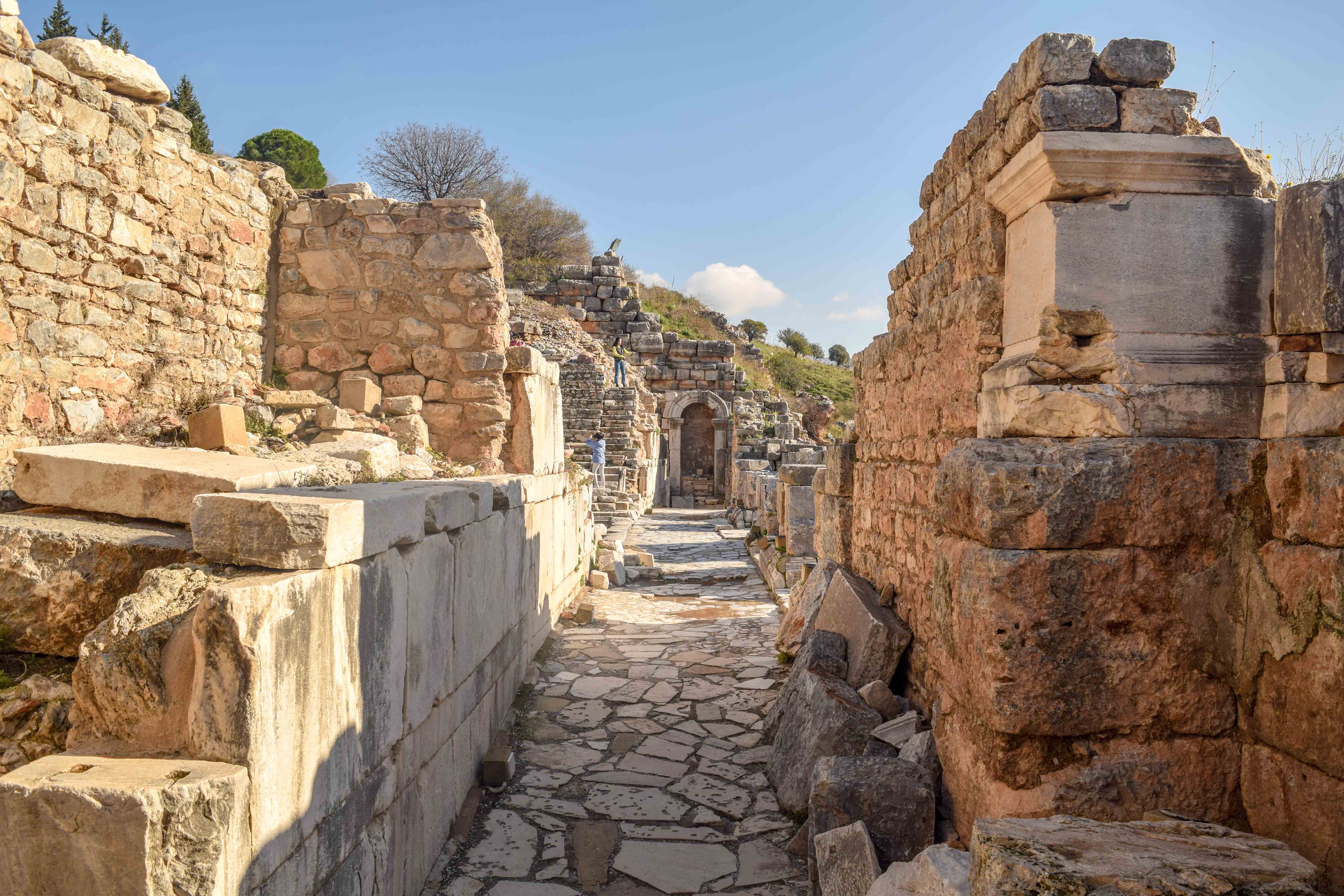
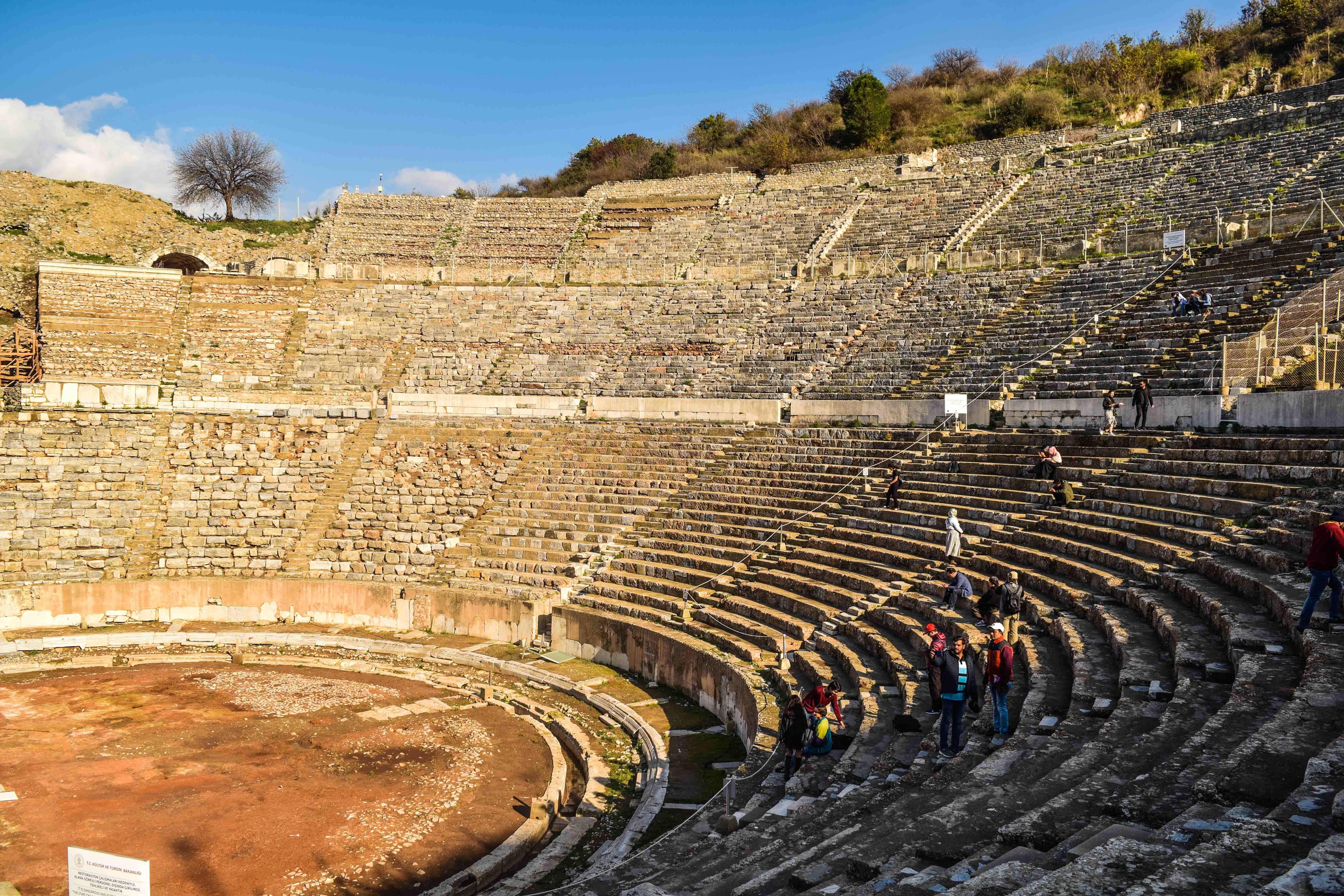
The cats of Ephesus
These ancient city ruins are now cats’ own court. Coming from Istanbul or Anatolia, most travelers get acquainted with the feline supremacy in this country. Cats are loved, respected, and celebrated in every breadth of Turkey. There are the Istanbullers who place armchairs on the street for the purpose of a cat’s comfort. And in winters, neighborhoods get dotted with street-side shelters to keep the city’s felines warm and hearty. Ephesus doesn’t let the feline supremacy down. In fact, they reign here. In their own mainly somnolent way the cats welcome the tourists, render elegance to the history of the place, and are recipients of untold affection and attention.

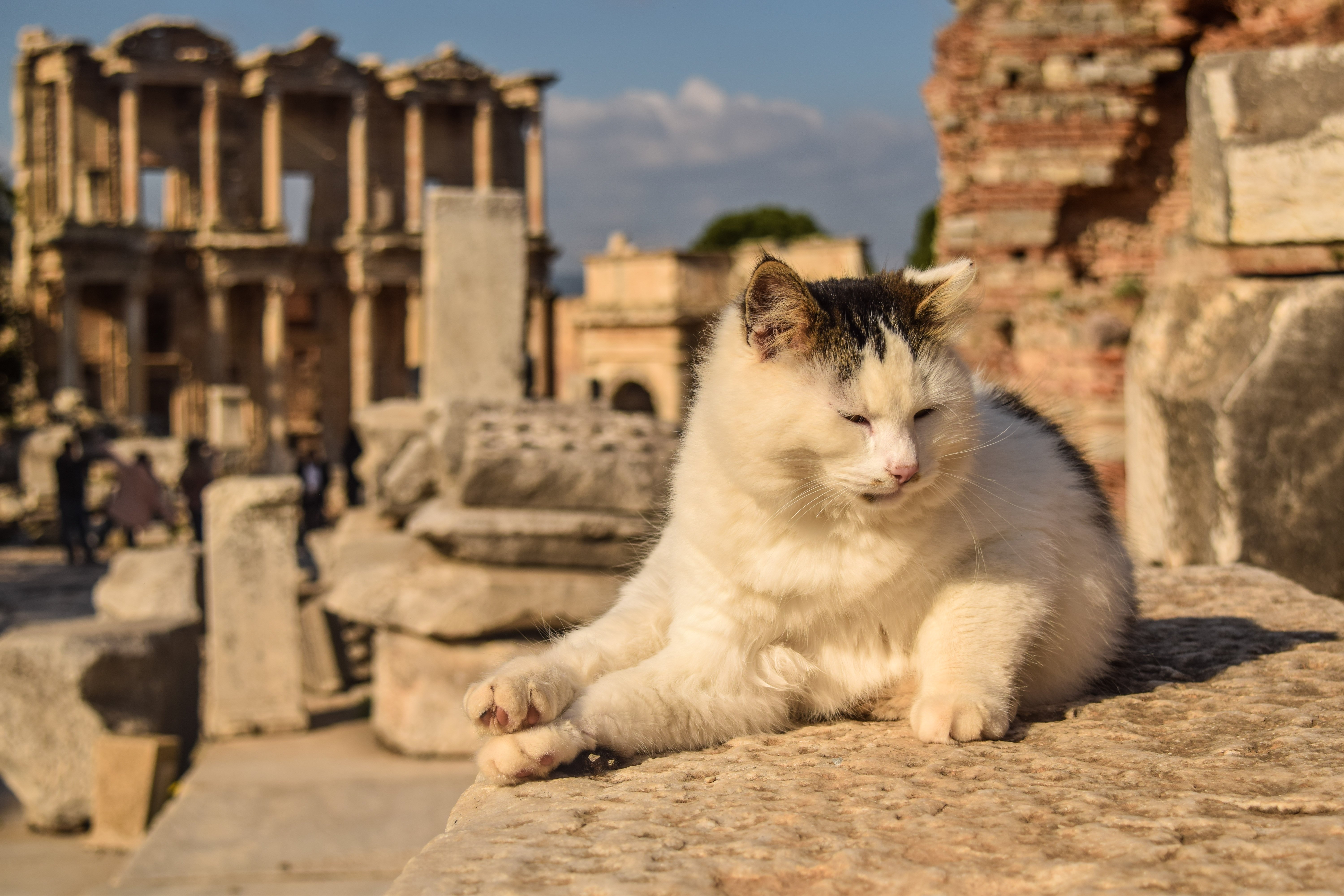

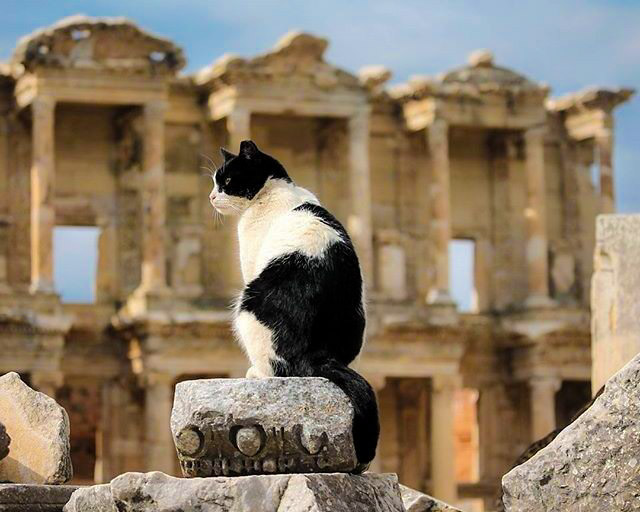
As I walked through the cobbled street, I lived a feeling of walking down the street of a Roman city. It was like a snapshot in time, where you could picture the entire city, the grand entrance gate, the pillars on both sides of the street, the temple at the end of the street, and the residential complex. It was like an entire city had come to life before you. I felt like walking down a grand stage, wrapped in history and myth, but waiting to come back to life; as if with some magical spell everything will come back to life, the chaos in the market-place, the hubbub on the ports, a throng of pilgrims studded with riches and jewels making an arduous journey to pay their obeisance in the temple of Artemis, the richly decored walls of the house of the riches, the calls of the soldiers, and the eras passing by starting from as way back to the Bronze age.










[…] left Denizli around mid-day. Pamukkale is well connected, and my couch-surfing host had instructed me to take […]
Love the cat pictures the most!
Also the early associations that these magnificent ruins dawn upon me is about the locales in The Comedy of Errors- Syracuse and Epheseus- who knows if Shakespeare did visit Epheseus, don’t know about errors but comedy certainly prevails!
Thanks for your kind words Samik. I did read the Shakespeare connection but didn’t explore that enough. And high chances he might have visited, Epheseus was a well known trade center back then.